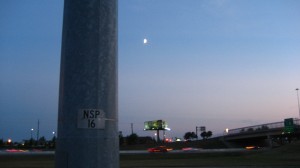Through Nonhuman Ears: Toward Object-Oriented Listening
Description
The question of a tree falling and no one around to hear it,
whether one considers it to be a question of science (does
an unsensed vibration constitute sound?) or a philosophical
inquiry into the nature of existence via perception, was no
doubt complicated after humans developed the means to listen
to sounds irrespective of time and space. Sound is no longer
contingent upon whether a human observes it directly, because
our ears have become extended by electronic technology.
Marshall McLuhan framed technological innovation as self-
amputations and extensions of the self: the wheel is an
extension of the foot, the computer an extension of the central
nervous system, and so on. Similarly, our ability to listen from
afar and record/catalog sonic phenomena, minimizing limitations
of space and time has undoubtedly changed our relationship with
our new, electronic “ears” as well as the phenomenon of sound
itself.
This recording seeks to examine our sonic relationships with
objects: the objects we listen to as well as the objects we listen
with. In many ways, I am sonically exploring the propositions
put forth by object-oriented philosophers, speculative realists,
and actor network theorists such as Bruno Latour, Graham
Harman, and Ian Bogost. Are humans and nonhumans on
equal ontological footing? Envisioned in sonic phenomena, this
altered ontology, one that displaces humans from the center
of existence and instead focuses on complex relationships as
determining identity, seems especially applicable. Sound, after
all, is precisely the result of objects (human and nonhuman alike)
colliding, vibrating, and moving in relation to one another.
This recording, therefore, exploits the various subjectivities
present in any perception of sound; it highlights the many
ears through which contemporary listeners hear. While most
recording technologies have sought to minimize their own
presence (in much the same way as human researchers and
recordists have attempted to remove themselves from data) as a
way to present a somehow truer, more objective representation
of phenomena, I have instead chosen to present sound that calls
attention to itself and its production. In other words, I have called
attention to the networked layers of bias (human and nonhuman
in relationship with one another) embedded in any sensory
experience.
Listening
The first feature of this recording to listen for and consider is the
perspective from which you hear wind and automobile traffic.
In this case, instead of using a typical dynamic or condenser
microphone that reproduces the sonic epistemology of the
human ear, I used a contact microphone to hear from the
perspective of a high-mast lighting pole near Interstate Highway
94. The second feature to listen for is noise. Instead of listening
around the noise of this recording, try to consider what Glitch
Theory and New Aesthetic scholars have suggested: think of the
noise/glitch not as a flaw, but as an aesthetic feature. You will
hear hum, hiss, and noise from the use of both the notoriously
noisy XLR input of the Marantz PMD-222 recording onto a Type I
cassette tape.
Equipment
These sounds were recorded in August of 2012 in Fargo, ND,
USA, using the following equipment: Marantz PMD-222 cassette
recorder, a homemade piezo contact microphone affixed to a
high-mast lighting pole with putty. Sound was recorded directly to
a Sony Type I Cassette.
Bibliography / Phonography
Berkeley, George, and Charles P. Krauth. A Treatise Concerning
the Principles of Human Knowledge. Philadelphia: J.B.
Lippencott & Co, 1878. Print.
Bogost, Ian. Alien Phenomenology, or What It’s Like to Be a
Thing. Minneapolis: University of Minnesota Press, 2012.
Print.
Harman, Graham. Prince of Networks: Bruno Latour and
Metaphysics. Melbourne: Re-press, 2009. Web.
Latour, Bruno. The Pasteurization of France. Cambridge:
Harvard University Press, 1988. Print.
Latour, Bruno. Reassembling the Social: An Introduction to
Actor-Network-Theory. New York: Oxford University
Press, 2005. Print.
McLuhan, Marshall and Quentin Fiore. War and Peace in the
Global Village. New York: McGraw-Hill, 1968. Print.
“Notes and Queries.” Scientific American 50.14 (April 1884):
218-219.
Biography
Steven Hammer is a Ph.D. candidate in Rhetoric, Writing,
and Culture at North Dakota State University in Fargo, ND,
USA, where he teaches rhetoric and composition courses with
emphases in international translation projects and new media/
multimedia composition. His academic and creative works have
been published in Enculturation and Cassette, and he has a
forthcoming publication with Wiley/IEEE Press. His research
is concerned largely with sonic composition within object-
oriented, posthuman spaces, as well as new media’s impact on
international translation and collaboration.
